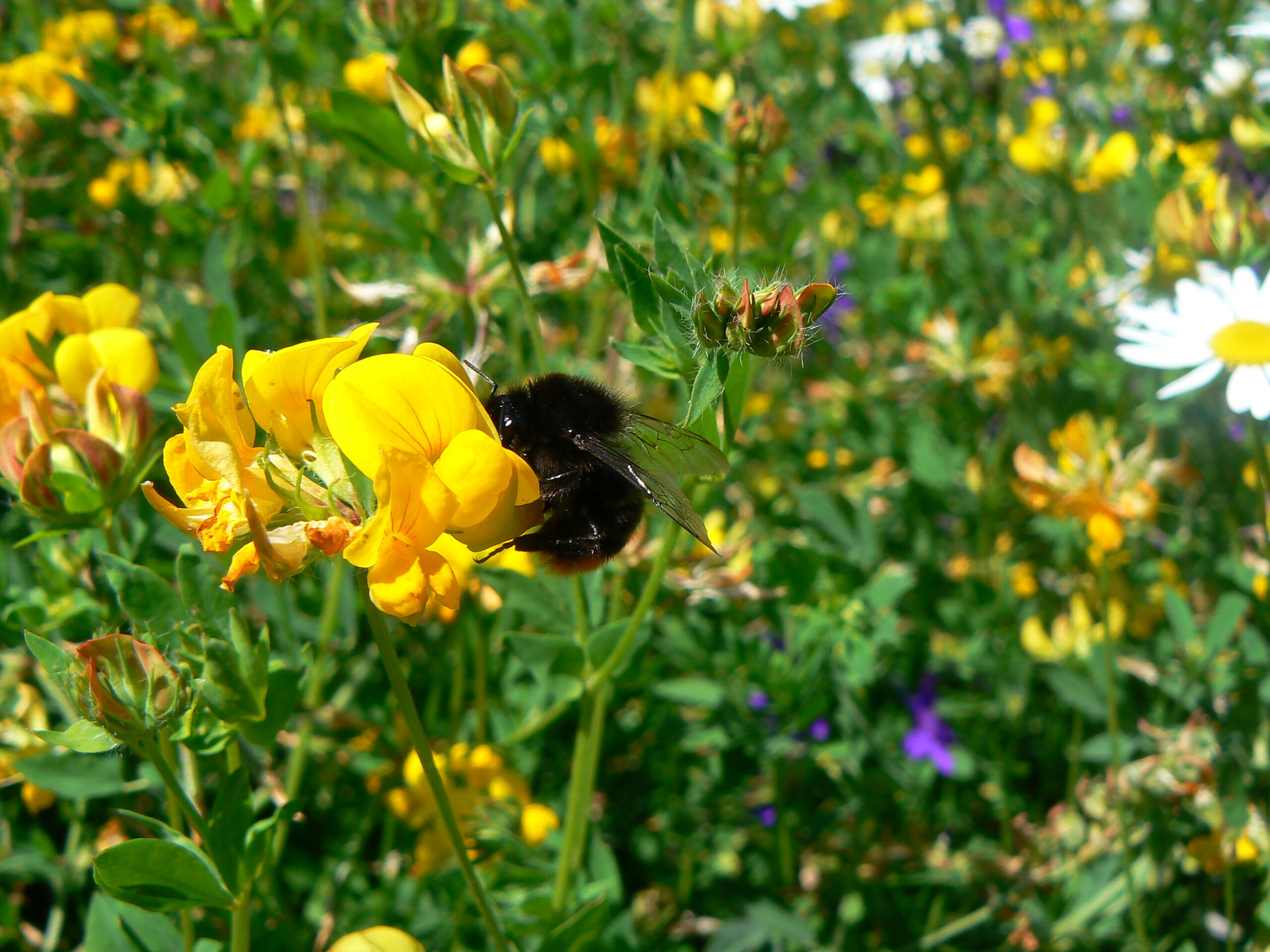Urbanization changes the composition of pollinating insect communities. But who are the winners and losers of this
environmental filter? Vincent Zaninotto and his collaborators attempt to answer this question in an article published
in the journal Insects, comparing the diversity of pollinators in natural environments and in Parisian green spaces.
It is commonly accepted that urbanization changes the composition of biological communities, including insect pollinator communities. But who are the winners and losers of this environmental filter? To answer this
question, Vincent Zaninotto and his collaborators compared pollinators in Parisian green spaces and rural meadows in the Ile de France region. By identifying the species present as well as their morphological and behaviouralcharacteristics, they deduced which traits were favoured in the urban environment. Their conclusions are developed in the article “Seasonal variations of pollinator assemblages among urban and rural habitats: a comparative approach using a standardized plant community”, published in the journal Insects.
To carry out this work, the team took advantage of an experimental set-up designed in partnership with the Station d’Écologie Forestière de Fontainebleau (University of Paris) and the CEREEP ECOTRON – Ile de France (ENS, CNRS), and developed as part of their work on the seasonal activity of urban pollinators (Zaninotto et al. 2020, Ecology
and Evolution): standardized floral assemblages, consisting of two plant species, white mustard (Sinapis alba) and birdsfoot trefoil (Lotus corniculatus). The pollinating insects that came to visit these plants were recorded for two years, in both urban and rural areas in parallel.
During this study, 63 species of pollinators were identified in Paris, including 44 species of wild bees. In contrast, 74 species were identified in the rural meadows of Seine-et-Marne, including 48 species of wild bees. The
diversity of Parisian pollinators, although slightly lower than that of rural areas, is therefore quite high in respect of the constraints of the urban environment. However, it should be noted that this is only a sub-sample of the pollinator communities, as only insects that thrive on mustard and birdsfoot trefoil are concerned.
It is mostly on the functional level that urban and rural pollinator communities differ. Indeed, the city seems to host fewer bees belonging to solitary or ground-nesting species. On the other hand, the winners are common species that can become very abundant, such as the common carder bee, Bombus pascuorum. In addition, wild bees had larger body sizes overall in cities than in rural areas.
Published in the special “Pollinator conservation” issue of the journal Insects, these results support the evidence that the urban environment is filtering out pollinator communities. This is probably due to the availability of food resources and nesting sites, which is altered in cities. Since pollinator diversity is essential for plant pollination, these effects must be considered in order to preserve the pollination function despite the increasing urbanization of our landscapes.
Publication
Zaninotto, V.; Perrard, A.; Babiar, O.; Hansart, A.; Hignard, C.; Dajoz, I. Seasonal Variations of Pollinator Assemblages among Urban and Rural Habitats: A Comparative Approach Using a Standardized Plant Community. Insects 2021, 12, https://doi.org/10.3390/insects12030199
Contact
ZANINOTTO Vincent, Doctorant (CIFRE Sorbonne Université et Ville de Paris)






